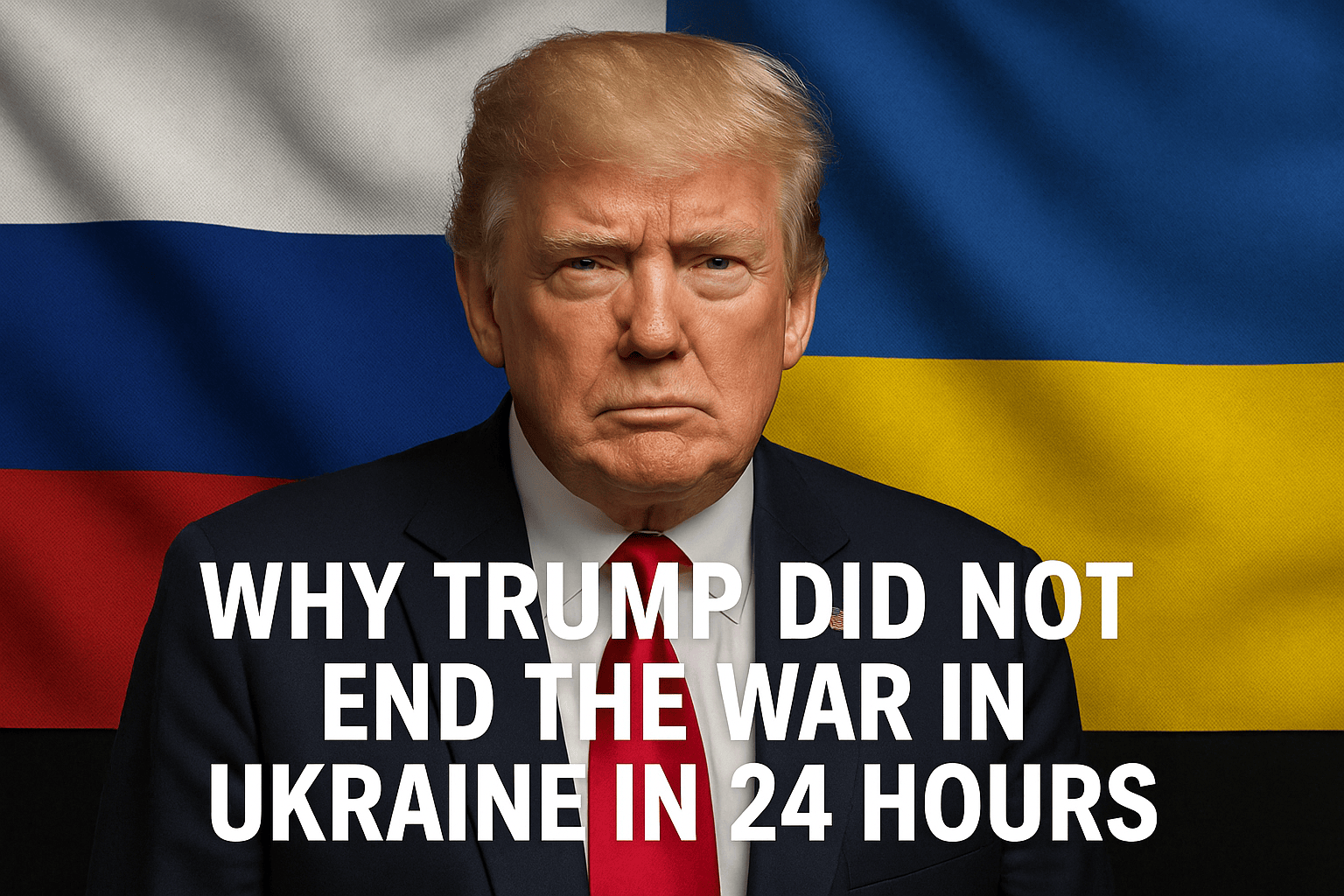Why Donald Trump did not end the war in Ukraine in 24 hours: analysis of promises and reality
During his election campaign, Donald Trump repeatedly stated that he could end the war between Russia and Ukraine “in less than a day.” His words caused a wide resonance: some perceived them as a sign of determination, others as populism. However, after Trump's return to the presidency, the war continues, and the promised “quick peace” has not come. To understand why this promise was not fulfilled, it is worth considering the key factors that made its fulfillment impossible.
Reasons why the war did not end in 24 hours
1. Populist rhetoric without a concrete plan
Trump's statement about “peace in a day” was not accompanied by any details or diplomatic mechanisms. It was part of an election strategy aimed at mobilizing the electorate, rather than a realistic foreign policy course. After he took office, it became clear that there were no prepared scenarios or negotiating frameworks.
2. The complexity of the geopolitical conflict
The war in Ukraine is not just a confrontation between two countries, but a conflict in which the interests of the US, the European Union, NATO, Russia, China, and other players are intertwined. No president can single-handedly force the parties to make peace, especially when one of them is an authoritarian state with a nuclear arsenal and revanchist ambitions.
3. Limited influence on the Kremlin
Despite claims of “personal ties” with Vladimir Putin, Trump has no leverage that could force Russia to stop its aggression without significant concessions. The Kremlin shows no willingness to compromise, and any concessions on the part of Ukraine would violate its sovereignty and Constitution.
4. Lack of support in the US Congress
The US Congress does not support the idea of a “quick peace” at the cost of Ukraine's territorial losses. Most congressmen are in favor of continuing aid to Kyiv and maintaining sanctions pressure on Russia. This limits Trump's ability to act independently.
5. Lack of understanding of the depth of the conflict
Ukrainian President Volodymyr Zelensky has repeatedly emphasized that Trump does not realize the scale of the tragedy caused by the war. Invitations to visit the front line have gone unanswered, and Trump's comments often boil down to general phrases without specific proposals.
6. Fear of political risk
Even if Trump wants peace, he is not ready to take responsibility for the failure of negotiations. Any unsuccessful attempt could be used by his opponents as proof of his incompetence, so he chooses a cautious tactic — avoiding decisive steps.
7. Balance between US and Russian interests
Trump is trying to maintain diplomatic channels with Moscow, avoiding harsh statements. This creates an impression of passivity, but in reality it is an attempt to avoid escalation. This approach does not contribute to a quick end to the war, especially when one of the parties is not showing a willingness to compromise.
8. The influence of US domestic politics
Trump is forced to take into account the internal mood of American society, where there is a divide over support for Ukraine. Part of the electorate advocates isolationism, while the other part advocates active participation in international processes. This forces the president to balance between foreign policy and domestic demand.
Conclusion
Donald Trump's promise to end the war in Ukraine in 24 hours turned out to be a political slogan rather than a realistic plan of action. The conflict, which has deep historical, geopolitical, and humanitarian roots, cannot be resolved with a single phone call or meeting. Reality requires a systematic approach, multi-level negotiations, pressure on the aggressor, and respect for Ukraine's sovereignty.
Trump has encountered limitations that prevent him from fulfilling his promise, even with the political will to do so. The war continues, and its end depends not on loud statements, but on real actions, international solidarity, and strategic endurance.


Comments are closed.